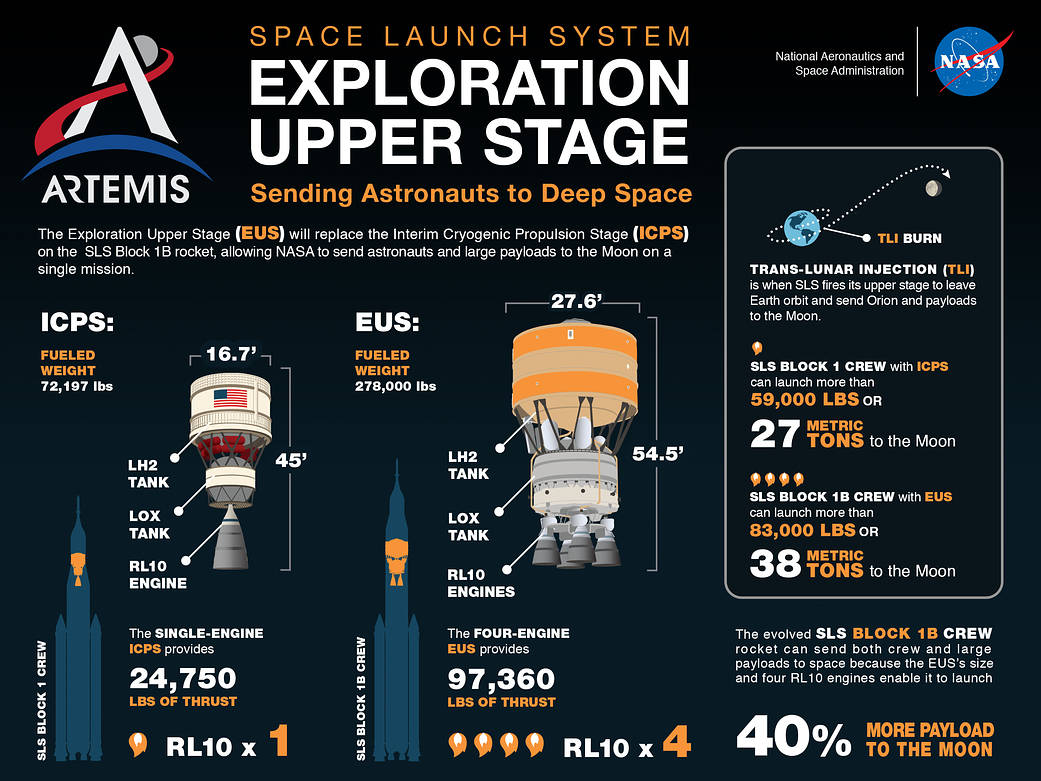NASA’s Space Launch System (SLS) rocket delivers propulsion in stages to send NASA’s Orion spacecraft and heavy cargo to the Moon for the Artemis lunar missions. At liftoff, the core stage and twin solid rocket boosters fire to propel the rocket off the launch pad send it into orbit. Once in orbit, the upper stage provides the in-space propulsion to set the spacecraft on a precise trajectory. While the rocket’s core stage design will remain the same for each of the Artemis missions, the rocket’s upper stage is selected to meet various mission requirements and goals. For the first three Artemis missions, including the mission that will land the first woman and the next man on the Moon by 2024, SLS will utilize an interim cryogenic propulsion stage with one RL10 engine to send Orion to the Moon. Later missions with the evolved SLS Block 1B rocket configuration will use an exploration upper stage with larger fuel tanks and four RL10 engines to send a crewed Orion and large cargos to the Moon.
NASA is working to land the first woman and next man on the Moon by 2024. SLS and Orion, along with the Gateway in orbit around Moon, are NASA’s backbone for deep space exploration. SLS is the only rocket that can send Orion, astronauts and supplies to the Moon in a single mission.
Image Credit: NASA/Kevin O’Brein

























